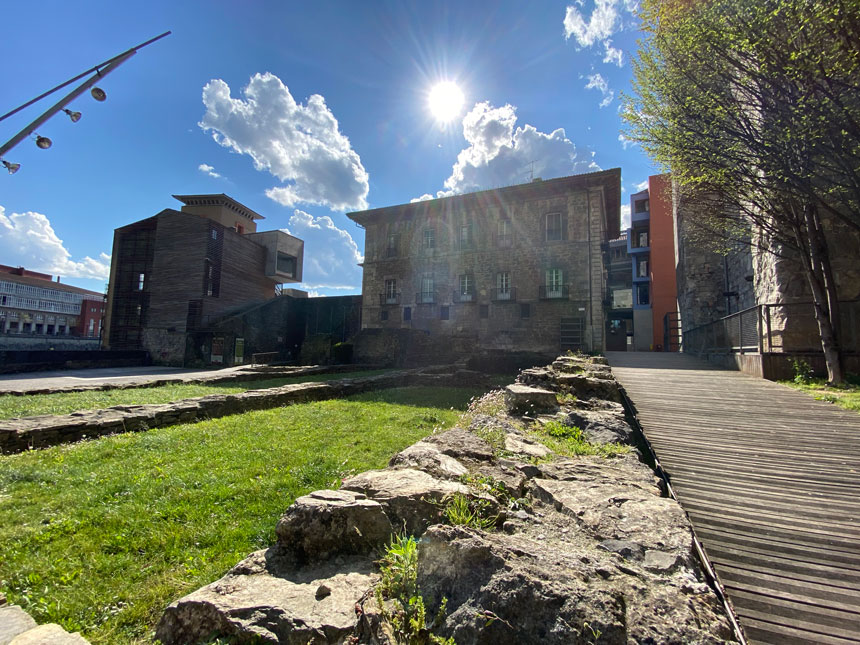You are here
8. Euskal Pizkundea

This stop has all sorts of interesting places and lots of stories to tell. Let’s look at them one at a time.
First of all is the Archaeological Park. However, what you can see here aren’t remains, but the foundations of a palace dating from 1538, which was never completed. The project, work of Luis de la Vega, architect under Charles V, envisaged the construction of a majestic Renaissance palace.
The work started on order by the parents of Alonso Idiaquez. However, years later, Alonso himself stopped the work to start another project in San Sebastian. Madly in love with local girl Gracia Olazabal, he commissioned the building of San Telmo Convent, so that he could be buried there, beside his beloved Gracia.
The discovery was the result of excavation work carried out in 2004. Not only that, but beneath those foundations they also found the remains of a Medieval necropolis and part of the ancient walls.
Once the Idiaquez palace project had been ruled out, in the 17th century the Aramburu Palace was built next to it, commissioned by Captain Pedro Aramburu Salsoro. His son, Miguel de Aramburu, set up a printers’ shop in the basement, where the Fueros or Charters of Gipuzkoa were printed for the first time in 1669. Today the building houses the Municipal Library and Archives, as well as an exhibition gallery.
The modern building standing beside it is a reconstruction of one the three mills that once existed in Tolosa. In fact, from the inside you can still see the hydraulic infrastructure of the original, dating from 1322. Today it houses the Children’s Library and a meeting point for travellers.
Closing the circle is a work dedicated by the famous sculptor Eduardo Chillida to the poet Xabier Agirre, better known as ‘Lizardi’. According to Chillida, the most important part of the work is, precisely, the part that’s not there, the window you can see through.
Lizardi was one of the most important figures of the Basque Renaissance. A few decades ago this zone was precisely given the name of Euskal Pizkundearen Plaza, in honour of the cultural and political movement in favour of the Basque language which appeared in the mid-19th century, of which Tolosa became a focal point in the 20th century. So yes, cultural life too is one of Tolosa’s most outstanding features.
Now make your way back to the Town Hall and take the street on the left to reach the next stop on your tour: Lapaza House.

